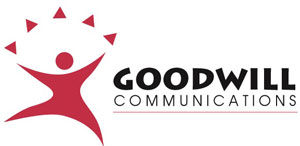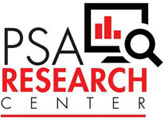MY WONDERFUL WORLD CAMPAIGN
Every day, our world becomes more and more interconnected. No longer can we Americans live in isolation with limited knowledge about the rest of the world. Our problems – AIDS, air pollution, identity theft, terrorism – are increasingly borderless. So, too, are the opportunities for our young people.
Today’s high school and college graduates can’t compete successfully in this world unless we send them into it with a fundamental understanding of its geography – including different political systems, culture, religion and geographic boundaries.

While schools are concentrating on math and science, they are devoting less time to social studies and geography. This is reflected in a National Geographic/Roper study which reveals an alarming lack of basic geographic knowledge among 18- to 24-year-old young Americans:
- Recent high school graduates in the U.S. ranked second to last in geographic literacy, just ahead of Mexico.
- Half of the respondents could not locate New York on a map of the United States, and nearly 6 in 10 could not locate Ohio.
- One-third of the young adults in the survey gave the wrong answer when asked to name the continent where the Amazon rainforest is located.
- One in five can’t identify the Pacific Ocean on a world map. Half can’t find India or Japan on a map of Asia, and despite the ongoing conflict there, six in ten can’t find Iraq on a map of the Middle East.
- Nearly a third believe the population of the U.S. is between 1-2 billion.
To try and inform parents, teachers and students about the importance of “geographic literacy,” the National Geographic Society Foundation retained Goodwill Communications to launch the My Wonderful World public education campaign.
The effort is comprised of a coalition of 24 other national partners including 4-H, American Federation of Teachers, Asia Society, Association of American Geographers, Budget Rent A Car, Committee for Economic Development, Council on Competitiveness, ESRI, The GLOBE Program, NBA Cares, The National Council for Geographic Education, National Council for the Social Studies, National PTA, SeaWorld/Busch Gardens Adventure Parks, Sesame Workshop, Smithsonian Institution, United Nations Foundation and World Affairs Councils of America.
Its purpose was to promote the importance of geographic literacy and provide the framework for our kids to understand their connected world.
The coalition is appealing to parents, caregivers, educators and students with an outreach program that includes a public-service advertising campaign, promotional events, grassroots activities and e-mail campaigns.
Multi-Media In Scope
The Wonderful World distribution plan consisted of targeting 1,200 broadcast TV stations and networks, 5,000 radio stations and 3,000 newspapers and magazines.
Obviously National Geographic had stunning photography which was used in the PSA, as well as all packaging collateral materials. Shown here are excerpts from the TV storyboard.
RADIO
For radio, we created custom packages which included a script booklet, with both live and as recorded copy, a CD on which the PSAs were recorded, a four-color mailer, and a business reply card to compile usage data.




While print media readership has declined significantly in the past few years, at the time Wonderful World campaign was distributed, print media were an important component.
Print PSAs in various sizes and topics were all included on a CD which was sent to the nation’s leading magazines and newspapers.

The campaign’s call to action was to visit a special Web site, which provided resources to help kids become smarter about their world, including ways for people to test their global IQs. The site also includes tools for communicating the importance of geography literacy to policymakers and educators.
This was one of the most successful campaigns we have distributed, generating $13.5 million in value with TV accounting for $11.5 million. It outperformed the other two best TV PSA campaigns selected from 38 campaigns we distributed and evaluated for 12 months. The campaign aired on radio and TV 74,542 times, resulting in 153 million Gross Impressions.



